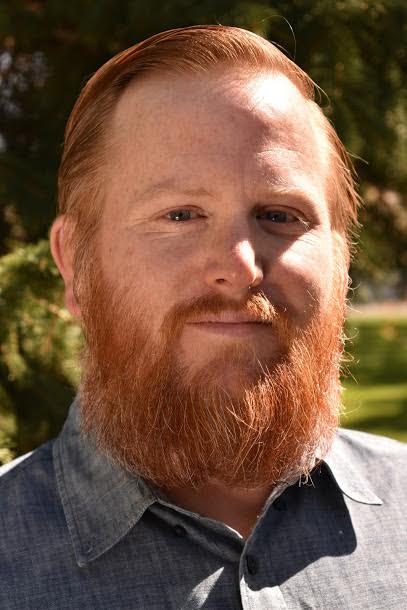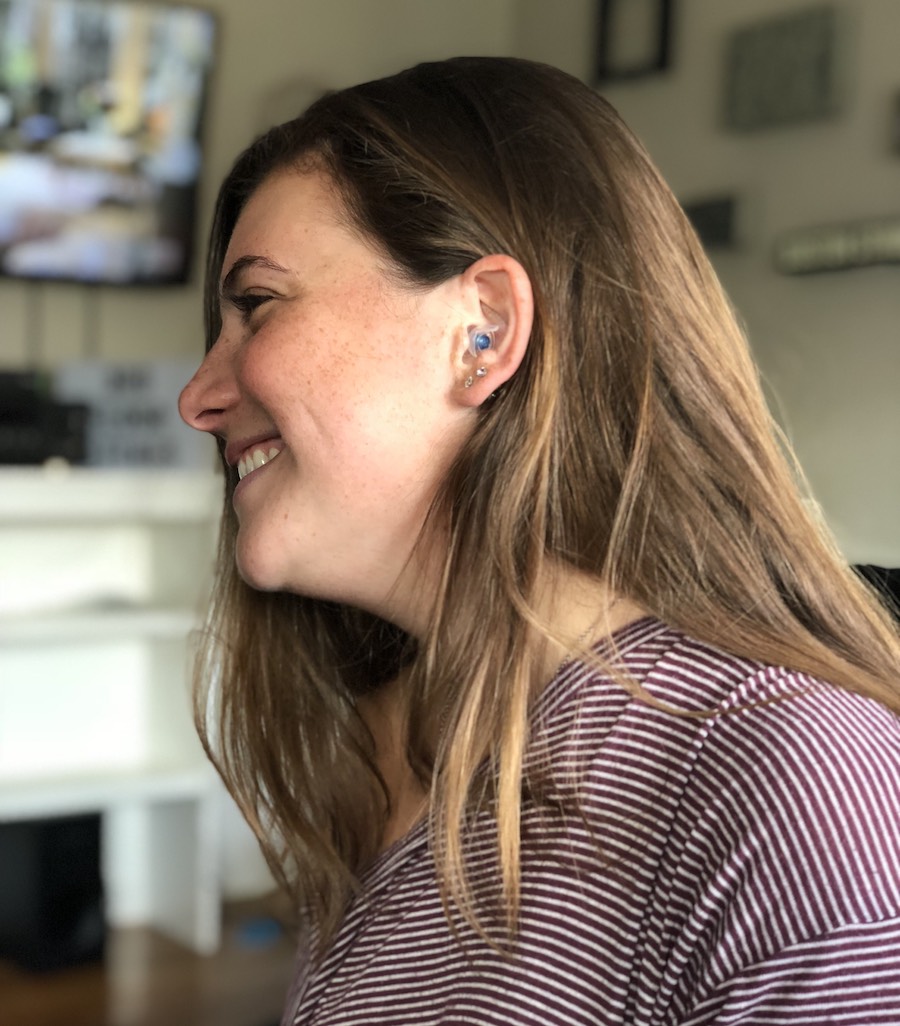By Lauren McGrath
Clockwise from left: Heather, her daughter, her husband, and son.
Heather Mills never imagined her early adulthood would be interrupted by Ménière's disease, a chronic hearing and balance disorder without a cure. She was diagnosed at 21—just within the typical 20-to-50-year-old range of onset—after a slew of tests and follow-up visits with a specialist at the University of Minnesota.
Heather’s symptoms initially included a unilateral (in one ear) mild low-frequency hearing loss, tinnitus, and some ear pressure and pain. Within a few years, her hearing loss became bilateral and worsened from moderate to severe. She was regularly distressed by intense ear pressure, struggled with her balance, and experienced occasional bouts of vertigo. As Heather learned, Ménière's affects each patient differently. She considered herself fortunate not to face drop attacks (instances of falling to the ground without losing consciousness), one of the most terrifying symptoms associated with Ménière's disease.
Despite its prevalence Heather family, hearing loss—once her most debilitating Ménière's symptom—came as a surprise. Her father has lived with a unilateral hearing loss since childhood, while her mother and maternal grandmother both developed high-frequency sensorineural hearing loss in their late 40s. “It never occurred to me that it may one day affect me, too,” reflects Heather, who can recall her ability to hear whispers across her high school classrooms.
Though she followed her doctor’s directions to take diuretics and maintain a low-salt diet for her vestibular symptoms, Heather chose not to purchase hearing aids. Lacking amplification, Heather faced difficulty in her job as a legal project specialist, which required frequent verbal interaction with clients, lawyers, and vendors both on the phone and in person. She found herself increasingly dependent on a close friend and colleague who truly served as her ears by repeating information for her during and after meetings.
Heather’s untreated hearing loss, combined with her constant fear of a sudden vertigo attack, fueled feelings of isolation. Unable to participate in conversations with friends, Heather stopped receiving invites to social outings. Challenges with work and friends began to affect Heather’s mental health. “I became depressed, lonely, and developed anxiety because of two unknowns: not knowing when my vertigo would strike again, and wondering how I’d continue to work to support my family.”
Heather noticed a sharp decline in her job performance when her helpful coworker—her ears—left the law firm. Part of Heather’s role required instructing staff on new software, and she was humiliated to find out that her trainees’ questions went unanswered because they’d not been heard. “This is when I began to lose confidence in myself,” Heather remembers.
Heather realized she had to address her hearing loss. In line with Hearing Health Foundation (HHF)’s findings in a 2017 survey of more than 2300 participants, cost is by far the largest barrier to a hearing aid purchase. Heather delayed taking action for so many years—11 to be exact—because her insurance provided no hearing healthcare coverage.
“All I can say now is I wish I had gotten hearing aids sooner!” exclaims Heather, who, with newfound confidence, no longer struggles in her daily professional communications and social life. Prior to pursuing treatment, her conversations had soured quickly when she constantly had to ask other parties to speak up, repeat themselves, or remind them of her hearing loss. Most painfully, communication without hearing aids often left Heather dismissed by a “nevermind” when she requested repetition. With her new devices, Heather felt her confidence restored.
Now in remission, Heather considers her life happy and her health stable. Hearing aids have somewhat alleviated her tinnitus, her ear pressure has subsided, and the vertigo spells are very rare. She’s sought treatment for her anxiety and depression. Heather credits her husband, Billy, with whom she has two young children, for his support during her more difficult years. Engaging in online Ménière's support groups has been a beneficial coping tool.
Heather is cautiously grateful for her current health, knowing the unpredictability of Ménière's could alter her circumstances at any time. She hopes for scientific advancements in Ménière's research that will one day uncover the causes, more reliable diagnostic procedures, and a cure.
Heather lives in Minnesota with her husband and children. She is a participant in HHF’s Faces of Hearing Loss campaign.
















